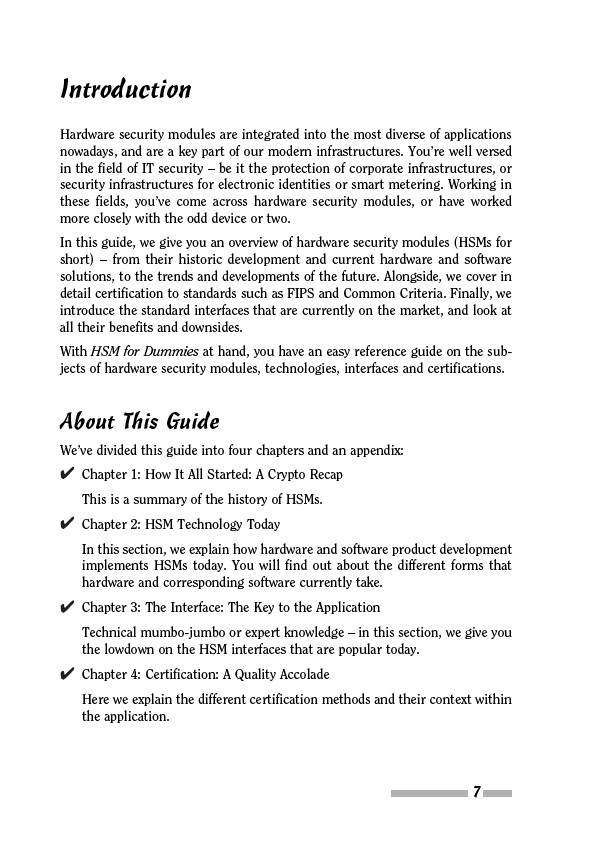
Introduction
Hardware security modules are integrated into the most diverse of applications
nowadays, and are a key part of our modern infrastructures. You’re well versed
in the field of IT security – be it the protection of corporate infrastructures, or
security infrastructures for electronic identities or smart metering. Working in
these fields, you’ve come across hardware security modules, or have worked
more closely with the odd device or two.
In this guide, we give you an overview of hardware security modules (HSMs for
short) – from their historic development and current hardware and software
solutions, to the trends and developments of the future. Alongside, we cover in
detail certification to standards such as FIPS and Common Criteria. Finally, we
introduce the standard interfaces that are currently on the market, and look at
all their benefits and downsides.
With HSM for Dummies at hand, you have an easy reference guide on the subjects
of hardware security modules, technologies, interfaces and certifications.
About This Guide
We’ve divided this guide into four chapters and an appendix:
Chapter 1: How It All Started: A Crypto Recap
This is a summary of the history of HSMs.
Chapter 2: HSM Technology Today
In this section, we explain how hardware and software product development
implements HSMs today. You will find out about the different forms that
hardware and corresponding software currently take.
Chapter 3: The Interface: The Key to the Application
Technical mumbo-jumbo or expert knowledge – in this section, we give you
the lowdown on the HSM interfaces that are popular today.
Chapter 4: Certification: A Quality Accolade
Here we explain the different certification methods and their context within
the application.
7